Viewing: Blog Posts Tagged with: villain, Most Recent at Top [Help]
Results 1 - 12 of 12
Blog: Seize the Day (Login to Add to MyJacketFlap)
JacketFlap tags: hero, bones, villain, Add a tag
Blog: drawboy's cigar box (Login to Add to MyJacketFlap)
JacketFlap tags: illustration friday, villain, queen of hearts, Patrick Girouard, Drawboy, Add a tag
Blog: OUPblog (Login to Add to MyJacketFlap)
JacketFlap tags: magic, Books, Literature, fairy tales, fairies, Disney, Media, Tinkerbell, violence, kitsch, terror, villain, Frozen, cruel, Editor's Picks, Maleficent, *Featured, TV & Film, Snow White and the Huntsman, Arts & Humanities, michael newton, The Weir, Victorian Fairy Tales, Add a tag
This story may or may not be a fairy tale, though there are certainly fairies in it. However, unlike any of his Victorian forebears or most of his contemporaries, Machen manages to achieve, only a few years before the comfortably kitsch flower fairies of Cicely Mary Barker, the singular feat of rendering fairies terrifying. With James Hogg’s 'Confessions of a Justified Sinner', Robert Louis Stevenson’s ‘Thrawn Janet’ and several of M. R. James’s marvellous ghost stories, ‘The White People’ is one of only a handful of literary texts that have genuinely unnerved me.
The post Between terror and kitsch: fairies in fairy tales appeared first on OUPblog.
Blog: Darcy Pattison's Revision Notes (Login to Add to MyJacketFlap)
JacketFlap tags: Characters, jane eyre, bronte, villain, create a character, antagonist, Add a tag
COMING: March, 2015
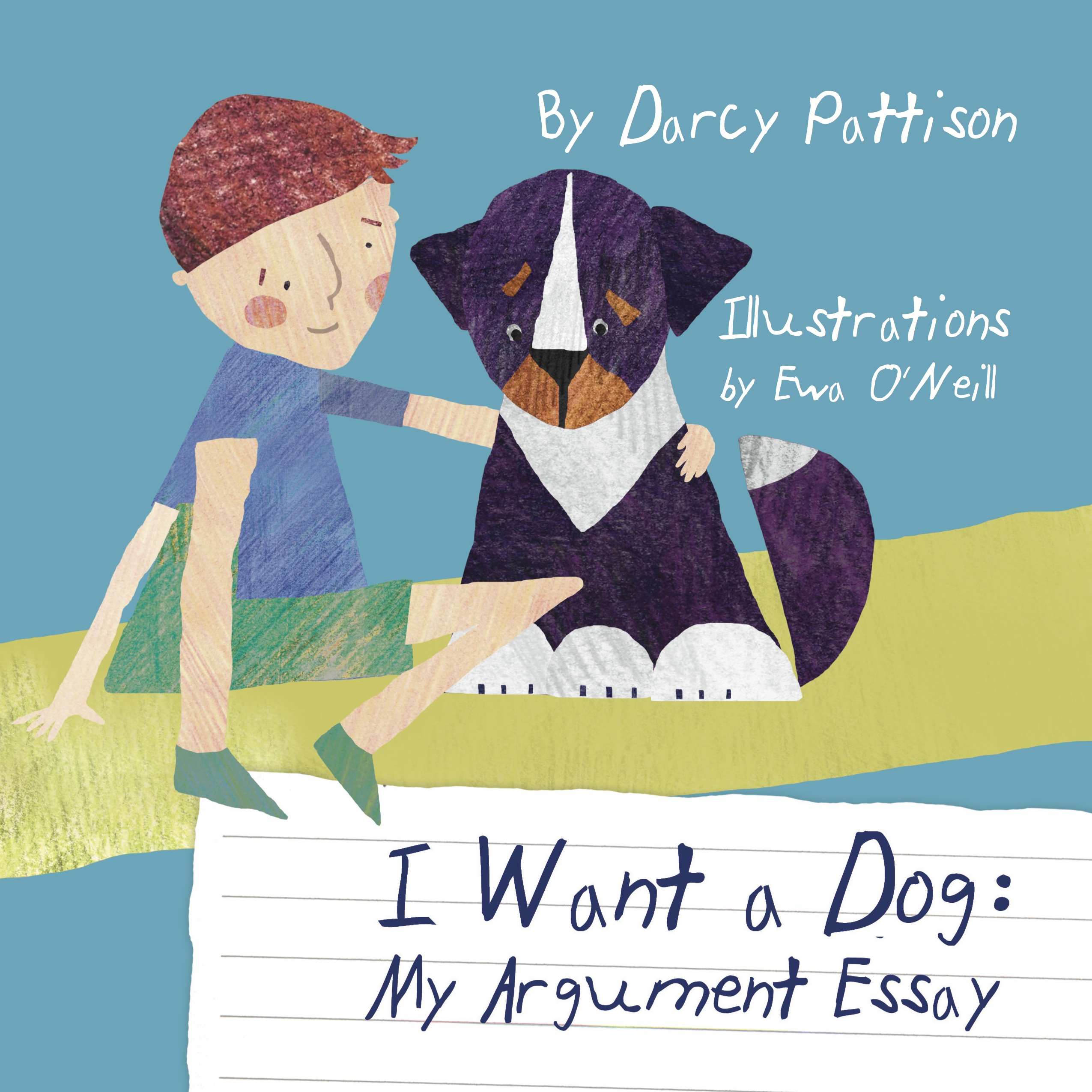
Guest post by K.M. Weiland
Ooh, bad guys. Where would our stories be without their spine-tingling, indignation-rousing, hatred-flaring charm? It’s a legit question. Because, without antagonists to get in our heroes’ way and cause conflict, we quite literally have no story.
So write yourself a warty-nosed, slimy-handed dude with a creepy laugh. No problemo, right? Bad guys aren’t nearly as complicated as good guys. Or are they? I would argue they’re more complicated, if only because they’re harder for most of us to understand (or maybe just admit we understand).
The best villains in literature are those who are just as dimensional and unexpected as your protagonists. They’re not simple black-and-white caricatures trying to lure puppies to the dark side by promising cookies. They’re real people. They might be our neighbors. Gasp! They might even be us!
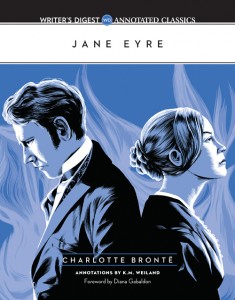 That raises some interesting possibilities, doesn’t it? It also helps us realize that villains can come in many different shapes and sizes. While studying Charlotte Brontë’s rightful classic Jane Eyre (which I analyze in-depth in my book Jane Eyre: The Writer’s Digest Annotated Classic), I identified four major types of villain.
That raises some interesting possibilities, doesn’t it? It also helps us realize that villains can come in many different shapes and sizes. While studying Charlotte Brontë’s rightful classic Jane Eyre (which I analyze in-depth in my book Jane Eyre: The Writer’s Digest Annotated Classic), I identified four major types of villain.
The Evil Villain: Mr. Brocklehurst
When we think of villains, this is the type we think of most often. He’s just nasty. He’s cruel, hypocritical, self-serving—and readers just want to punch him in the face. He may take the form of a mafia don, a dictator, a serial killer, or even something as comparatively “harmless” as an overbearing father.
In Jane Eyre, the evil villain manifests deliciously in the tyrannical Mr. Brocklehurst, the head of the horrible boarding school where Jane’s aunt disposes of her. Brocklehurst isn’t evil because he’s out killing, raping, or stealing. He’s evil because of his complete lack of compassion and his sadistic pleasure in his own power. When a young Jane dares to stand up to him, he subjects her to cruel punishment and lies about her to the rest of the school.
Even worse, he pretends he’s a pious benefactor. He has no idea he’s a cruel bum. He believes he and his school are saving these poor girls! Always remember that even the most evil villains will rarely recognize their own villainy. As far as they’re concerned, they’re the heroes of their own stories. Lucky for us, their hypocrisy only ups the ante and makes them more despicable.
The Insane Villain: Bertha Mason
Sometimes villains aren’t so much deliberately bad as psycho bad. They’re out of their heads, for whatever reason, and they may not even realize how horrifically their actions affect others. Psychos are always popular in horror stories for the simple fact that their near inhuman behavior makes them seem unstoppable. If they can’t understand the difference between right and wrong, what chance will your hero have of convincing them of the error of their ways—before it’s too late?
Perhaps the most notable antagonist in Jane Eyre is the one readers don’t even see for most of the book. She’s on stage for only a few scenes and mentioned outright in only a few others. But her presence powers the entire plot. [SPOILER] I am, of course, talking about Bertha, the mad wife of Jane’s employer and would-be husband Edward Rochester, whom he secretly keeps locked in the attic. [/SPOILER] The whole story might not even have happened had Bertha not been bonkers.
The insane villain is a force of nature. Although there will always be motivations for their behavior (even if they’re only chemical), they are people who aren’t behaving badly for sensible reasons. They can’t be rationalized with, and they won’t be moved by empathy for others. Their sheer otherness, coupled with their immovability, makes them one of the most fearsome and powerful types of villain.
The Envious Villain: Blanche Ingram
The envious villain is your garden-variety bad guy (or girl). These folks are a dime a dozen because their motivations and desires are ones almost all of us experience from time to time. Their envy, ego, and personal insecurity drives them to treat others badly for no other reason than spite (whether it’s petty or desperate).
Halfway through her story, Jane Eyre faces a formidable rival for Mr. Rochester’s love—the beautiful Blanche Ingram. Blanche is everything Jane isn’t (she’s the popular girl to Jane’s lunch-table outcast): gorgeous, rich, accomplished, and socially acceptable. On the surface, Blanche has no reason to fear or envy our plain-Jane protagonist. And yet, right from the start, she senses Jane as a threat to her marriage plans, and it immediately shows in her snide, condescending, and sometimes downright cruel behavior.
Envious villains are often those who, like Blanche, seem to have it all. But their glamour disguises deep personal insecurities. No one is ever a jerk for no reason. There’s always something (whether it’s a spoiled childhood or low self-esteem) that drives these most human of all villains. But don’t underestimate the power of their antagonism. Their envy can cause them to commit all sorts of crimes—everything from rudeness to murder.
The Ethical Villain: St. John Rivers
This is my personal favorite villain type—because he’s so darn scary. The ethical villain, like the envious villain, is less noticeable in his antagonism than are evil and insane baddies. This guy isn’t even a bad guy at all. He’s a very good guy. But he’s taken his goodness to the extreme. He’s on a crusade to save the rest of the world—either including or in spite of the protagonist—and heaven help anyone who gets in his way. He’s convinced the means absolutely justify his holy end.
Jane’s cousin St. John Rivers is a marvelous character. He is a man who is determined to live righteously and make his life count for some deeper purpose. He surrenders his own love for the village belle in order to go to India as a missionary. Doesn’t sound so bad, does it? And yet, his cold-hearted devotion to what he views as his duty, and his determination to make Jane adhere to those views, presents her with her single fiercest and most dangerous antagonist. St. John would never dream of harming Jane or committing a crime, but his fanaticism for his cause very nearly destroys her life.
The ethical villain is ethical. He conforms to most, if not all, of society’s moral norms. But somewhere along the line, those ethics fail to match up with the protagonist’s. That exact point is where he becomes an obstacle (and therefore an antagonist) to the hero. But he also offers us one of our richest opportunities for exploring moral gray areas and deep thematic questions. As such, he is arguably the most valuable villain type in your author’s toolbox.
The possibilities for antagonists are every bit as rich as they are for protagonists. Stop and take a second look at your story’s villain. Does he fit into one of the four categories we’ve discussed here? How can you take full advantage of that category’s opportunities for creating a compelling opponent? Or would your story benefit if you used a different kind of villain? Or maybe more than one kind side by side? The choices are endless!
–
Blog: Darcy Pattison's Revision Notes (Login to Add to MyJacketFlap)
JacketFlap tags: villain, Novel Revision, motivations, Add a tag
I’m working on motivating my villain and have found 39 possible motivations. I’m sure there are more, but these should jump start your imagination. They are presented here with a statement from the villain’s point of view.
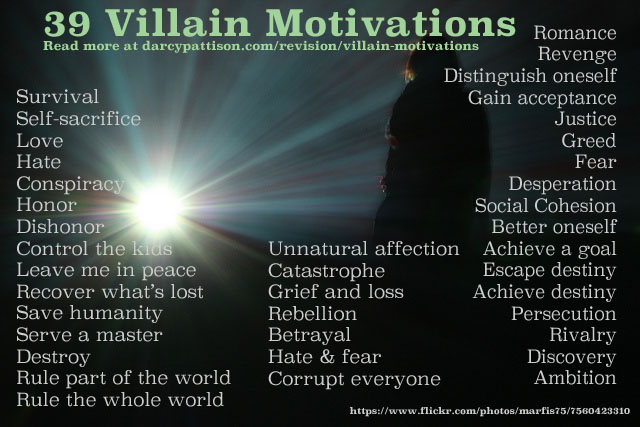
- Romance: I want to marry the princess.
- Revenge – ruin a hero: I want to ruin the King.
- To distinguish oneself: I want the princess to respect me.
- To fit in/gain acceptance: I want to attend the princess’ coronation and eat at her table.
- Justice: The king killed my mother, so the king must die.
- Greed – get rich: I want to steal everything from the King’s treasury.
- Fear: I am afraid that our lands will be stripped bare by this evil king.
- Desperation: If something doesn’t change in the next week, I will be executed.
- Social cohesion: Us zombies need to stick together.
- Desire to better oneself: I was born a peasant, but I will die a king.
- Power to achieve a goal: I must be king, so I can change the laws about owning property.
- Escape destiny: At birth, a prophet said I would kill the king; however, I am stealing enough money to escape to another country and avoid that destiny.
- Achieve destiny: At birth, a prophet said I would kill the king; and that’s my plan.
- Persecution: Growing up in a wheelchair has been hell.
- Rivalry: Prince John wants to marry the Princess, but she’s mine.
- Discovery: I will find out the king’s darkest secret and use it against him.
- Ambition: I want. . . everything!
- Survival (deliverance): In the midst of this civil war, I will survive.
- Self-sacrifice: Someone must stop this evil king and I’ve decided to step up and do it.
- Love: The princess has stolen my heart; so, I’ll steal her.
- Hate: The princess is an evil woman; when she becomes my wife, I’ll make her suffer.
- Conspiracy: I’ve gathered twelve good men to help me overthrow this king.
- Honor: Men from my city never back down, even if it costs me everything.
- Dishonor: Men from my city are idiots; I’ll never do things the “right” way.
- Unnatural affection: I want to marry the princess and take the queen as a lover.
- Catastrophe: A volcano is going to erupt and when it does, I’ll plunder the city.
- Grief and loss: When my mother died, I lost all interest in doing good.
- Rebellion: I’m the leader of the guerrilla forces.
- Betrayal: I was engaged to the princess, and then she married Prince John.
- Spread hate and fear: I love hate. Hate, hate, hate.
- Corrupt everyone: Come join me as I rob the king.
- Control the kids: If those kids make noise one more time at midnight, I’ll get ‘em.
- Leave me in peace: I never wanted to leave my home town, but since you’ve made me, I’ll show you what’s what.
- Recover what is lost: The king took my mother’s locket as tribute, and if it’s the last thing I ever do, I’ll get it back.
- Save humanity: To save humanity, I’ll have to kill the whole army.
- serve a master (ex. The Fuhrer): I’ll follow King George anywhere, even if it means killing King Phillip.
- Destroy: Ha! Ha! Ha! I love to burn down houses.
- Rule part of the world: I want to be King of the Mermaids.
- Rule all of the world: I will rule the Earth.
Blog: Darcy Pattison's Revision Notes (Login to Add to MyJacketFlap)
JacketFlap tags: point of view, character, characters, POV, hero, villain, Add a tag
START YOUR NOVEL
Six Winning Steps Toward a Compelling Opening Line, Scene and Chapter- 29 Plot Templates
- 2 Essential Writing Skills
- 100 Examples of Opening Lines
- 7 Weak Openings to Avoid
- 4 Strong Openings to Use
- 3 Assignments to Get Unstuck
- 7 Problems to Resolve
Question: How do you tell a story and make sure that both sides get heard?
Answer: This is a time when switching point-of-view might be helpful.
The default for telling a story is 3rd-person point-of-view. You tell it like you are recording from a camera that sits right above the point-of-view (POV) character’s head. Usually the POV character is the main character, but it can be a friend or some other character. The key is the pronouns: you use he, she, they, them.
If the camera is above the character’s head, you can’t tell what the character is thinking. That’s 1st person POV, which uses I, me and my pronouns. There is a close 3rd person POV which lets you imply the character’s thoughts.
1st: I sift through photos until–I stop and hold up THE photo. It shows me, sitting on my Dad’s lap. I was just five and it was the day before he disappeared.
3rd: She shifted the photos, one by one. Then she held one up and shifted to let the light fall on it better. Yes, it was Dad and she was sitting on his lap. She remembered that day because it was the day before her Dad disappeared.
Which do you like better? It’s a personal thing in some respects and also a question of which one serves your story better.
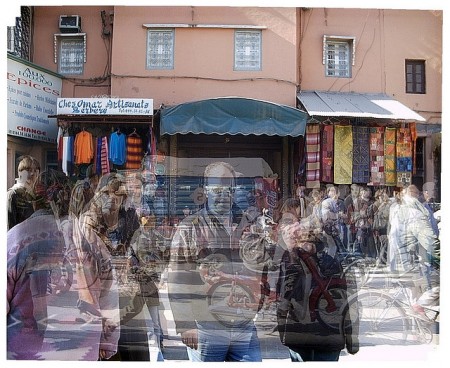
But back to the question: How do you make sure both sides get heard? Usually, you’ll create a story with two POV characters, one the hero(ine) and one the villain(ess). POV switches typically happen at chapter breaks, that is you’ll have one chapter from the Hero(ine)’s POV, then a chapter from the Villain(ess)’s POV. You can alternate as needed and you don’t have to make it evenly split between the two POV.
The advantage of this is that you can explain the deep issues that each character has from their POV. The difficulty of this is creating two characters that the audience will truly care about and will root for. You want the audience to like the characters. Is your villain a likeable sort? Or at least a sympathetic sort?
Also, consider what the audience will know if you use this strategy. The reader will be in on every nuance of the villain’s plans. How will you create surprise? You can build suspense, which is slightly different. For suspense, the reader knows something will happen and hopes against hope that the character will avoid the problem. That sort of thing will work with an alternating chapter strategy.
Sometimes, the POV switch will take place within a chapter, but usually, the sections are set off somehow, maybe an extra space or asterisks or other visual cues that something has changed.
What rarely works is changing within a paragraph.
In the end, how do you know if alternating chapters will work? You try it out.
Blog: Darcy Pattison's Revision Notes (Login to Add to MyJacketFlap)
JacketFlap tags: creative writing, character, prompt, villain, novel revision, antagonist, Add a tag
In our continuing quest to write 750 words a day, today, we will think like our opposites. Our enemies.
There is always two sides to a story and to Think Like a Writer, we need to explore the full emotional depth of our story or novel.Today, write a scene from a character who represents the opposite side, the opposite take on things, the opposite point of view. Generally, this will mean your villain or your antagonist.
Read this three part series about villains:
Now, write 750 words explaining your villain’s point of view, exploring their backstory, understanding the whys and wherefors of this fella.
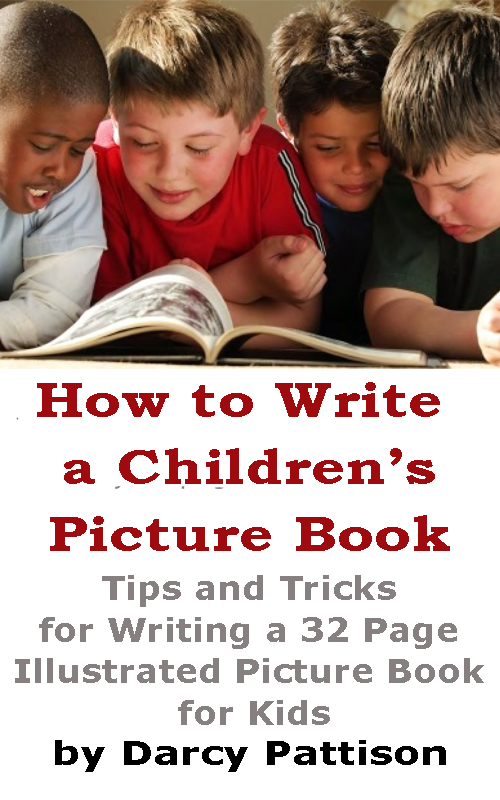 | NEW EBOOKAvailable on |
Blog: Galley Cat (Mediabistro) (Login to Add to MyJacketFlap)
JacketFlap tags: ThrillerFest, villain, Writer Resources, Veronica Roth, Lord Voldemort, CraftFest, Gayle Lynds, Adolph Hitler, He-Who-Must-Not-Be-Named, Kari Allen, villainous, Harry Potter, J.K. Rowling, Katherine Paterson, Authors, advice, characters, Add a tag
 How do you create a villain? We’ve rounded up some handy tips from around the literary world.
How do you create a villain? We’ve rounded up some handy tips from around the literary world.
1. During her talk at CraftFest, suspense author Gayle Lynds said that “without a great villain, your hero has no one to play against.” She felt that all characters should be fully-developed human beings; heroes have to have flaws and “villains aren’t necessarily total monsters.”
2. Writer Kari Allen tweeted with this bit of advice on writing villains: “I heard Katherine Patterson speak recently and she said if you can’t find yourself in your villains, rewrite.”
New Career Opportunities Daily: The best jobs in media.
Add a CommentBlog: Monday Artday (Login to Add to MyJacketFlap)
JacketFlap tags: weekly challenge, Josh Billings, villain, JPiC, super villain, Add a tag
One of the slimiest, shiftiest villain to ever grace the silver screen was the despicable Hans Guber, as portrayed by Alan Rickman, in the original “Die Hard”.
Under the guise of a group of international terrorists, the cold and ruthless Hans and his cohorts merely wish to steal 640 million dollars in bearer bonds from the vault of the Nakatomi Building in Los Angeles. Their plans are eventually thwarted by visiting New York City cop, resourseful John McClane, the self-proclaimed “fly in the ointment; monkey in the wrench”.
“Die Hard” is actually based on the 1979 novel “Nothing Lasts Forever” by Roderick Thorp. The book, itself a sequel to Thorp’s novel “The Detective” (filmed in 1968 with star Frank Sinatra), was adapted for the action film with several alterations, most notably the inclusion of the Hans Gruber character, who did not originally appear.
Josh Pincus is Crying has even more of my illustrations.
Blog: Monday Artday (Login to Add to MyJacketFlap)
JacketFlap tags: josh pincus, weekly challenge, villain, JPiC, super villain, Add a tag
She spent her entire screen time in “The Wizard of Oz” tormenting Dorothy Gale. Whether it was in her role as Miss Almira Gulch, the wealthy but crotchety landowner who takes Dorthy’s beloved Toto away under court order or as the main roadblock in Oz keeping Dorothy from returning to Kansas, The Wicked Witch of the West was as evil as they come. (Okay, so Dorothy killed her sister with a house, but she was a witch, after all.) The Wicked Witch was eventually served her just desserts when a slow reaction to a hurled bucket of water brought her to a bubbling and steamy demise.
Margaret Hamilton, who portrayed the Witch, was in reality a former kindergarten teacher who loved children. (Two of her students during her teaching days were future actors Jim Backus and William Windom.) After her iconic, career-defining role in “The Wizard of Oz”, Margaret often visited schools as part of her advocacy for public education. She loved the childrens’ reaction when she told them that she played the witch and was often coaxed into performing the famous cackle to squeals of delight.
A veteran of over 100 movies, television productions and a turn as “Cora” in a popular series of Maxwell House coffee commercials, Margaret passed away at age 82 in 1985.
Josh Pincus is Crying shows even more of my illustrations!
Blog: Monday Artday (Login to Add to MyJacketFlap)
JacketFlap tags: villain, bad guys, Challenge, Add a tag
Hannibal Lecter? Dr. Evil? Lex Luthor?
Illustrate your favorite villain. Bad guys (and women) you love to hate.
Challenge ends on April 4, 2011.
Blog: Darcy Pattison's Revision Notes (Login to Add to MyJacketFlap)
JacketFlap tags: ally, enemy, novel, character, plot, hero's journey, branch, how to write, villain, Joseph Campbell, snowflake, Add a tag
Plot: 9 Ways of Looking at Plot
I’ve been thinking about plot and looking through my library of writing books to see the big picture of how plot is discussed and taught, how writers approach plot. It seems to me that the discussions fall into about 9 camps.
1. Plot equals character. This camp says that the characters and their problems will move the story. If you know your characters well enough, they will get into and out of scraps and fights and interesting problems. Usually, but not always, this is accompanied with the encouragement to just start writing and see where the character takes you.
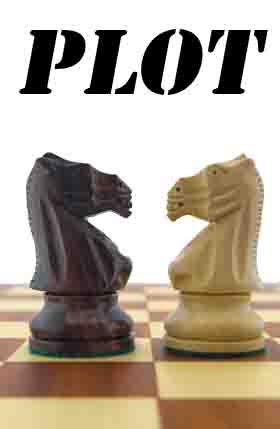 It seems to me that people who successfully write this way have a deeply ingrained, unconsciously competent, intuitive grasp of a story arc that includes a character facing his deepest fears and growing or changing some way as a result. As they write, they try to align the character with this inner sense of character. In Jack Bickham’s book, Scene & Structure, one appendix is of a Master Plot, detailing one particular way to conceive of the plot structure; authors who begin with character have an internal Master Plot of character.
It seems to me that people who successfully write this way have a deeply ingrained, unconsciously competent, intuitive grasp of a story arc that includes a character facing his deepest fears and growing or changing some way as a result. As they write, they try to align the character with this inner sense of character. In Jack Bickham’s book, Scene & Structure, one appendix is of a Master Plot, detailing one particular way to conceive of the plot structure; authors who begin with character have an internal Master Plot of character.
Those who are unsuccessful at this approach can create interesting characters who do interesting things, but they don’t key in to the deepest fears, don’t make the character suffer and change and grow.
Other readings about starting with character:
- Free Write to Let Characters Reveal Themselves
- Idea, Idea, Character, Character, Character, Setting
- Plot Starts with Character
2. Plot is a branching structure. If you start with a single statement, you can split it to two statements, and split that to four and that to eight and so on. Examples of proponents of this method are the Randy Ingermanson’s Snowflake Method, and How to Write a Damn Good Novel by James N. Frey.
Basically, you start with the Deep Theme (Snowflake) or Premise (Frey) which could describe the entire novel in a single sentence. Then you develop it by making it two (or three) sentences. Then each of those is divided into several sentences, 4-6 sentences. And so on.
The key to this is knowing, rather than discovering, the deep theme or premise. Some people start from the thinnest of threads and need those exploratory drafts to find out about character and theme. If you fall into this camp, then use Snowflaking as a revision strategy, instead of a first draft strategy.
More reading:
- If you like structured steps, or you want support for your first time plotting, you may like the Snowflake 10-step method.
- Outline by Snowflaking
3. Universal Plots. Some say there are only two plots in the world: a stranger comes to town or a character goes on a journey. Ronald Tobias’ book 20 Master Plots discusses some of the major universal plot schemes and generally lays out a structure for each; most helpful is when he designates some as character plots and others as action-oriented plots. For example the difference in a Quest and an Adventure is whether you focus on the inner or outer plot.
Other books in this vein are the classic from June & William Noble, Steal this Plot.
Or look at this 1916 book, which expresses the same idea of universality of plot:
4. Plot Patterns. Plot is a series of events that present the character with increasingly difficult choices until at the climax the conflict is resolved. This is the basic narrative arc you learned in high school. It may be enough to analyze a story by, but I’ve rarely seen it successful in leading a writer through the convolutions of plot.
However, there are patterns of plot which would fit the general idea of a narrative arc. The Hero’s Journey (orginally from Joseph Campbell, but best presented for writers by Christopher Vogler in The Writer’s Journey) establishes steps a character must face: call to action, denial, crossing the threshold, enemies & allies, approach to the inmost cave, supreme ordeal, reward, the road back, resurrection, return with elixir. John Vorhaus proposed a similar idea with his Comic Throughline in The Comic Toolbox.
I find this type pattern helpful because it fills in the smaller details left out by the English teacher’s description of plot. The Hero’s Journey is open-ended and general enough to allow for flexibility, while still being specific enough to point the writer in a useful direction. In other words, the English teacher’s plot says that the character faces a series of obstacles before reaching a final climax. The Hero’s Journey describes what some specific obstacles will look like AND it sequences those obstacles into an ideal timeline.
Books Mentioned in This Series
- Bickham, Jack. Scene & Structure
- Noble, June & William. Steal this Plot.
- Tobias, Ronald. 20 Master Plots
- Vogler, Christopher. The Writer’s Journey.
- Vorhaus, John. The Comic Toolbox.
Websites Mentioned in This Series
- Free Write to Let Characters Reveal Themselves
- Idea, Idea, Character, Character, Character, Setting
- Plot Starts with Character
- Randy Ingermanson’s Snowflake Method
Do you use one of these plot paradigms? Why that one?
Tomorrow: 4 more variations of plotting.
Related posts:






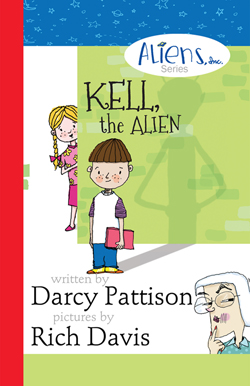

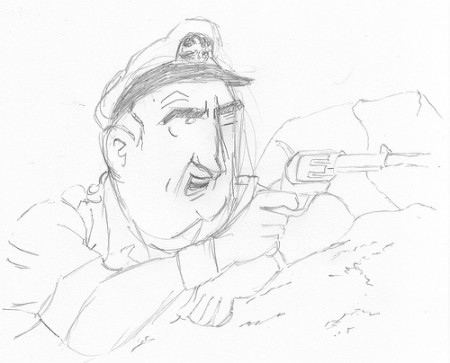
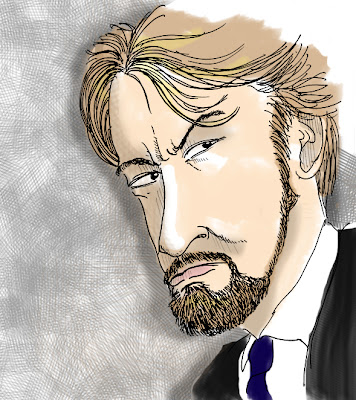
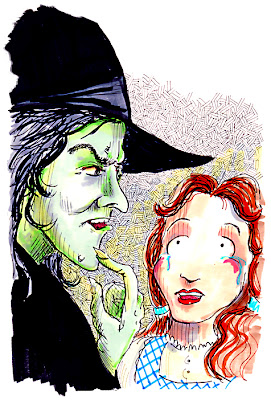

I saw this in the blogroll on Elizabeth Rose Stanton’s site and I said to myself....”That looks like Hans Gruber!” Die Hard is one of my altime favorite movies. You nailed him Josh! (Never knew that about Nothing Lasts Forever.... thanks for the info.